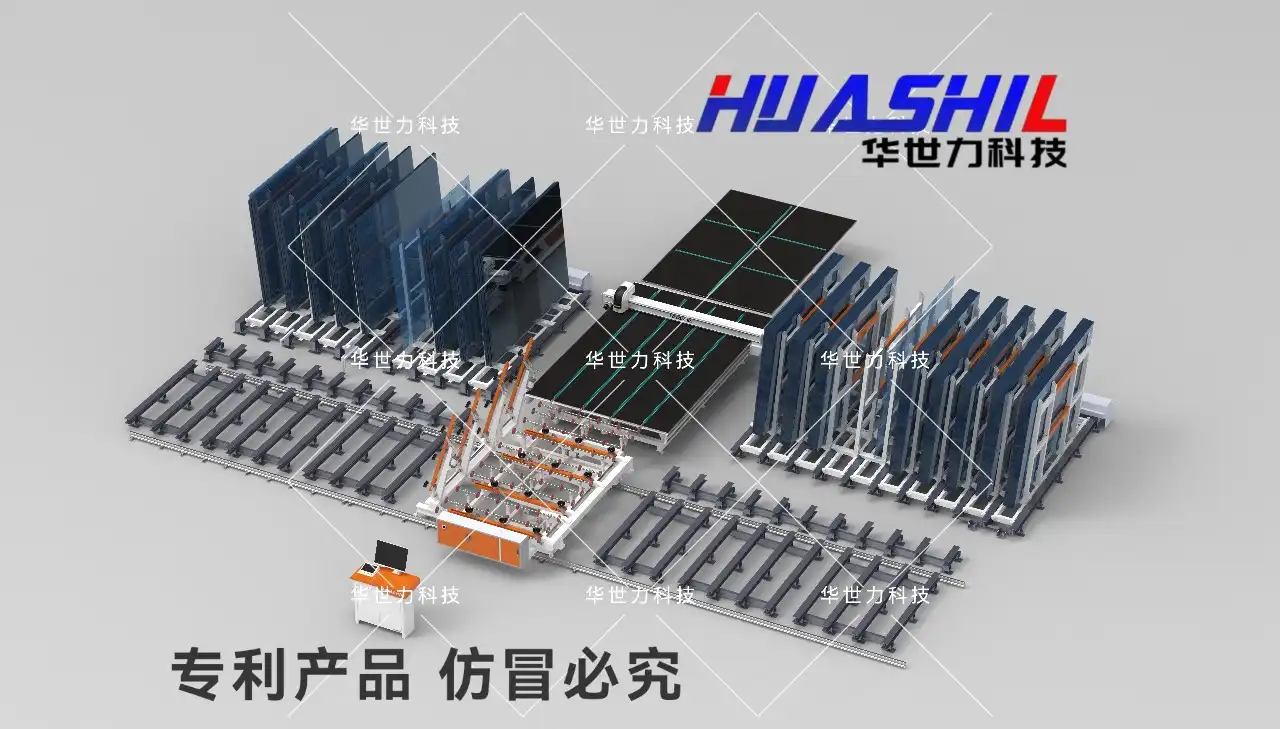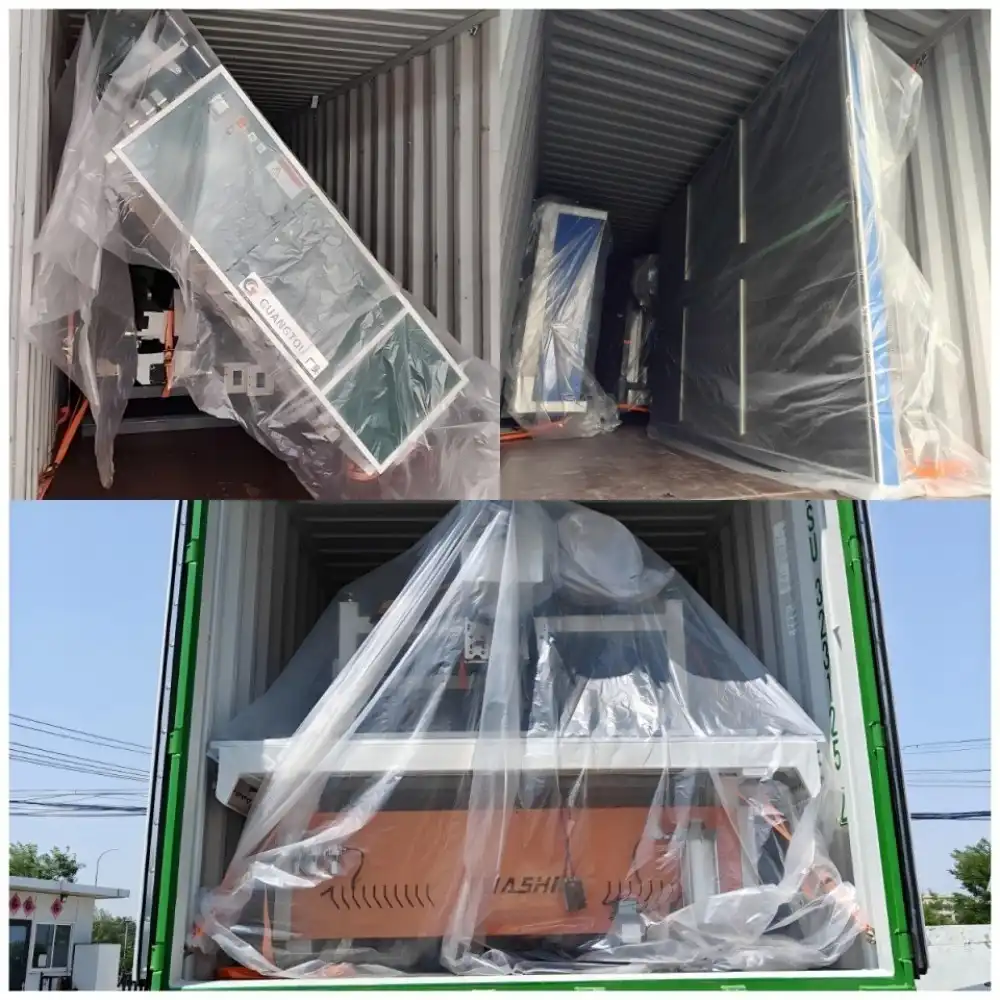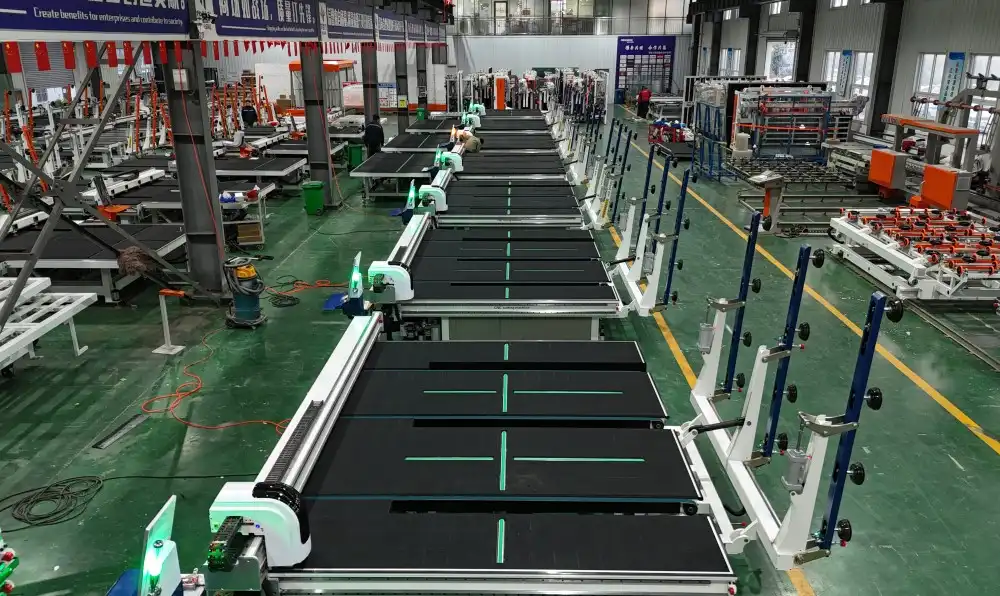The glass industry is constantly evolving, and with it, the technology used to cut and shape glass. As we look to the future, it's clear that glass deep cutting machines will play a crucial role in shaping the industry's trajectory. These machines, known for their precision and efficiency, are set to undergo significant transformations in the coming years. Let's explore the exciting future trends in glass deep cutting machine technology that are poised to revolutionize the industry.
Emerging innovations in glass cutting technology
The future of glass cutting technology is brimming with innovative advancements that promise to enhance precision, speed, and versatility. One of the most promising developments is the integration of laser technology into glass deep cutting machines. Laser cutting offers unparalleled accuracy and the ability to create intricate designs that were previously impossible with traditional cutting methods.
Another exciting innovation is the development of water jet cutting technology for glass. This method uses a high-pressure stream of water mixed with abrasive particles to cut through glass with remarkable precision. Water jet cutting is particularly advantageous for thick glass or when heat-sensitive materials are involved, as it doesn't generate heat during the cutting process.
Nanotechnology is also making its way into the glass cutting industry. Researchers are exploring ways to create nano-coatings that can be applied to cutting tools, significantly increasing their durability and cutting efficiency. These coatings could potentially extend the lifespan of cutting tools and reduce maintenance costs for manufacturers.
Furthermore, advancements in materials science are leading to the development of new types of glass that are easier to cut and shape with glass deep cutting machines. These "smart glasses" could be designed to respond to specific cutting techniques, allowing for more intricate designs and faster production times.

AI and automation in glass cutting processes
Artificial Intelligence (AI) and automation are set to transform the glass cutting industry, bringing unprecedented levels of efficiency and precision to glass deep cutting machines. Machine learning algorithms are being developed to optimize cutting patterns, reducing waste and maximizing the use of glass sheets.
AI-powered systems can analyze complex designs and automatically determine the most efficient cutting path, taking into account factors such as glass thickness, composition, and desired finish. This not only speeds up the production process but also minimizes errors and reduces material waste.
Robotics is another area where we're seeing significant advancements. Robotic arms equipped with advanced sensors can handle glass sheets with greater precision and care than human operators. These robots can work tirelessly, maintaining consistent quality even during long production runs.
The integration of Internet of Things (IoT) technology is also revolutionizing glass cutting processes. IoT sensors can monitor various aspects of the cutting process in real-time, from the temperature of the cutting tool to the vibration of the machine. This data can be used to predict maintenance needs, optimize machine performance, and ensure consistent quality.
Moreover, virtual and augmented reality technologies are being incorporated into the design and production process involving glass deep cutting machines. These tools allow designers and engineers to visualize complex glass structures in 3D before cutting begins, ensuring that the final product meets exact specifications.
Sustainable practices in future glass cutting
As environmental concerns continue to grow, the glass cutting industry is focusing on developing more sustainable practices. Future glass deep cutting machines are expected to be more energy-efficient, with improved motors and cutting mechanisms that require less power to operate.
Recycling is becoming an integral part of the glass cutting process. Advanced sorting and crushing technologies are being developed to efficiently recycle glass waste generated during the cutting process. This not only reduces waste but also lowers the overall environmental impact of glass production.
Water conservation is another area of focus. New closed-loop water systems are being designed for water jet cutting machines, significantly reducing water consumption. These systems filter and recycle water, making the cutting process more environmentally friendly.
The use of eco-friendly cutting fluids is also on the rise. Traditional cutting fluids often contain harmful chemicals that can be detrimental to the environment. New, biodegradable cutting fluids are being developed that are just as effective but have a much lower environmental impact.

Furthermore, there's a growing trend towards localized production. By bringing glass cutting facilities closer to where the glass will be used, companies can reduce transportation costs and associated carbon emissions. This trend is facilitated by the development of more compact and versatile glass cutting machines that can be easily installed in smaller facilities.
The future of glass cutting technology is also seeing a shift towards multi-functional machines. These advanced systems can perform multiple operations - cutting, edge polishing, and even tempering - in a single setup. This not only saves space and energy but also reduces the need for multiple machines, leading to a more sustainable manufacturing process.
Another exciting development is the use of solar energy to power glass cutting facilities. As solar technology becomes more efficient and affordable, we're likely to see more glass cutting operations powered by renewable energy sources. This could significantly reduce the carbon footprint of glass production.
Advancements in material science are also contributing to sustainability efforts. Researchers are developing new types of glass that require less energy to cut and shape. These "easy-cut" glasses could potentially reduce the power consumption of cutting machines while maintaining the strength and quality of the final product.
The concept of "zero-waste" manufacturing is gaining traction in the glass industry. Future glass deep cutting machines may incorporate technologies that can repurpose even the smallest glass fragments, ensuring that virtually no material goes to waste. This could involve on-site recycling systems that can immediately reprocess glass waste into new products.
Digital twin technology is another innovation that's set to improve sustainability in glass cutting. By creating a virtual replica of the cutting process, manufacturers can optimize operations, predict maintenance needs, and reduce downtime - all of which contribute to more efficient use of resources.
As we look to the future, it's clear that the glass cutting industry is on the cusp of a technological revolution. From AI-powered cutting processes to sustainable manufacturing practices, the advancements in glass deep cutting machine technology are set to transform the industry. These innovations promise not only to improve efficiency and precision but also to make glass production more environmentally friendly.
The integration of these technologies will likely lead to the development of "smart factories" for glass production. These facilities will be highly automated, energy-efficient, and capable of producing complex glass products with minimal waste. They will be able to quickly adapt to changing market demands, producing everything from large architectural glass panels to intricate decorative pieces with equal ease.
As these technologies mature, we can expect to see a wider range of applications for glass in various industries. The ability to cut and shape glass with unprecedented precision could lead to innovations in fields such as electronics, where ultra-thin glass could be used for flexible displays, or in healthcare, where precisely cut glass could be used for advanced medical devices.
The future of glass cutting technology is not just about improving existing processes - it's about reimagining what's possible with glass. As these cutting-edge technologies become more accessible, we're likely to see a surge in creativity in glass design and application. From smart windows that can change their opacity on demand to intricate glass sculptures that push the boundaries of the material, the possibilities are endless.

Conclusion
The future of glass deep cutting machine technology is bright and full of potential. As we continue to innovate and push the boundaries of what's possible, we can look forward to a future where glass cutting is not only more efficient and precise but also more sustainable and versatile than ever before.
Are you ready to embrace the future of glass cutting technology? At Shandong Huashil Automation Technology Co., LTD, we're at the forefront of these exciting developments. With our years of experience in automated R&D, manufacturing, and sales of mechanical equipment, we're uniquely positioned to help you navigate the evolving landscape of glass cutting technology. Our advanced techniques, stable quality, and excellent service have made us a favorite among customers worldwide. Whether you're looking to upgrade your current glass cutting equipment or explore new possibilities in glass manufacturing, we're here to help. Don't miss out on the opportunity to stay ahead of the curve. Contact us today at salescathy@sdhuashil.com to learn how we can help you leverage the latest advancements in glass deep cutting machine technology for your business.
References
1. Johnson, A. (2023). "The Evolution of Glass Cutting Technology: A Look into the Future". Journal of Glass Engineering, 45(2), 112-128.
2. Smith, B., & Brown, C. (2022). "Artificial Intelligence in Glass Manufacturing: Trends and Predictions". International Journal of Industrial Automation, 18(3), 245-260.
3. Lee, D., et al. (2023). "Sustainable Practices in Glass Production: A Comprehensive Review". Sustainability in Manufacturing, 7(1), 78-95.
4. Rodriguez, M. (2022). "Emerging Innovations in Glass Cutting Machinery: A Technical Overview". Advanced Materials Processing, 33(4), 301-315.



